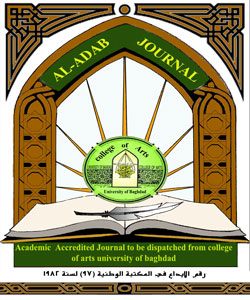Abstract
The translation of legal texts is often considered one of the most difficult types due to the potential consequences of any misinterpretation. Translation students at the University of Duhok struggle with legal translation and make errors when translating legal documents from English into Kurdish due to the absence of sufficient resources. For the lack of research in this area, this study investigates the types and frequencies of errors made by senior students at the Department of Translation at the University of Duhok to identify common translation errors and understand the challenges faced by students in this specialized field. By employing a mixed method, the study analyzes the errors found in 58 samples of a legal document translated from English into Kurdish. The study adopted Na Pham's (2005) model for analyzing translation errors. The analysis of the data uncovered a total of 1272 errors. The errors were categorized into grammatical, syntactical, morphological, and collocational types. Grammatical errors were found to be the most frequent, constituting 49.89% of the total, with preposition misuse and case marker errors being the most dominant. Syntactical errors accounted for 22.01% and included missing verbs and incorrect word order. As represented by 26.10% of the total, morphological errors were primarily caused by wrong word selection. Collocational errors were the least frequent type at 2.98%. This research aims to contribute to improving the students' curriculum by identifying the most common areas of weakness for students and educators. The study also calls for further research in this area to better understand the challenges and strategies for effective legal translation
Keywords
error analysis
legal translation
Na Pham (2015)
translation students.
Abstract
غالبًا ما تعتبر ترجمة النصوص القانونية من أصعب أنواع الترجمة بسبب العواقب المحتملة لأي تفسير خاطئ. يواجه طلاب الترجمة في جامعة دهوك صعوبات مع مادة الترجمة القانونية ويرتكبون بسبب ذلك أخطاءا عند ترجمة المستندات القانونية من الإنجليزية إلى الكردية وذلك لعدم توفر المصادر اللازمة. نظرا لندرة البحوث والدراسات العلمية في هذا المجال، تبحث هذه الدراسة في أنواع وتكرار الأخطاء التي يرتكبها طلاب السنة النهائية في القسم المذكور لتحديد أخطاء الترجمة الشائعة المرتكبة لديهم وفهم التحديات التي يواجهونها في هذا المجال التخصصي. من خلال استخدام منهجية متعددة (كمية و نوعية) قامت الدراسة بتحليل الأخطاء الموجودة في 58 عينة عبارة عن ترجمة لوثيقة قانونية من اللغة الإنجليزية إلى الكردية من قبل 58 طالبًا في السنة الرابعة. ولأن الدراسة توقعت أن تكون الأخطاء النحوية هي السائدة نتيجة التفاوت النحوي بين هاتين اللغتين، فقد اعتمدت نموذج نا فام (2005) المعتمد لتحليل أخطاء الترجمة. من خلال تحليل البيانات تم تشخيص 1272 خطأ نحويا تم تصنيفها إلى أخطاء قواعدية، ونحوية، وصرفية، ومتلازمات لفظية. أظهرت نتائج الدراسة أن الأخطاء القواعدية هي الأخطاء الأكثر شيوعًا، حيث شكلت 49.89% من الإجمالي، مع كون عدم استخدام حروف الجر بشكل صحيح وأخطاء أشكال الإعراب الأكثر شيوعًا. بلغت نسبة الأخطاء النحوية 22.01% وشملت الأفعال المفقودة وترتيب الكلمات غير الصحيح. تمثل الأخطاء الصرفية 26.10% من الإجمالي، وقد تمثلت في المقام الأول باختيار الكلمات الخاطئة. وكانت أخطاء المتلازمات اللفظية هي الأقل شيوعاً بنسبة 2.98%. يهدف هذا البحث إلى المساهمة في تحسين المناهج الدراسية للطلاب من خلال تحديد مواطن الضعف الأكثر شيوعاً لدى الطلاب والمعلمين. وتدعو الدراسة أيضًا إلى إجراء مزيد من البحث في هذا المجال لفهم التحديات والاستراتيجيات الخاصة بالترجمة القانونية الفعالة بشكل أفضل.
Keywords
تحليل الأخطاء، الترجمة القانونية، نافام (2015)، طلاب الترجمة
